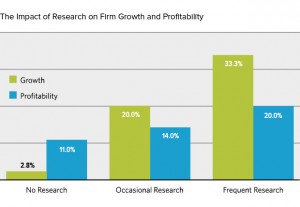— August 14, 2018

ar130405 / Pixabay
Organizations invest a great deal of time, effort, and money into their leadership development programs. It stands to reason, then, that they would like to know whether or not these programs are actually functioning as intended. Ongoing evaluation and reassessment helps companies to continuously refine their training tools and methods to ensure they reflect the needs of today’s workplace and are prepared to handle challenges in the future.
There are a number of ways to evaluate the effectiveness of a development program, but sometimes simply asking a few simple questions is sufficient to highlight areas of concern. Once a problem is identified, proactive measures can be taken to address the issue, either by changing some aspect of the program or implementing an entirely new learning strategy.
Here are a few questions that can expose shortcomings in an organization’s leadership development process:
Are new behaviors forming?
The ultimate goal of leadership development, of course, is to help leaders develop the skills they need for success. However this training is delivered, it should eventually lead to the formation of new behaviors. Exposure to new ideas, materials, and practices usually leaves participants energized and eager to implement what they’ve learned.
Unfortunately, these good intentions often run into the limitations of human memory. The average adult retains only about 10% of what they hear in a classroom lecture, so adopting the new strategies they learned in a recent training session can be difficult when they may remember the concept, but not how to best implement it.
Habit formation can only take place with repeated practice over time. Leaders don’t become better active listeners by reading or watching videos about active listening; they become better by actually listening to people in a real-life scenario. Without the opportunity to apply the strategies they’ve learned, leaders will struggle to form good habits that can make them more effective in their roles.
Getting that real-world practice can be difficult, however, because there are bound to be mistakes along the way. If the organization doesn’t accommodate these growing pains, leaders may be less willing to put what they’ve learned to use and less likely to get helpful feedback when they do. This combination of fear and uncertainty will significantly undermine training efforts, causing employees to forget what they’ve learned and continue to lean on old habits rather than risk trying something new.
If employees have undergone training but don’t seem to be forming any new behaviors based on that learning, an organization should reevaluate the follow-up and application aspects of its training programs. It may also be worthwhile to consider whether performance-based pressures are discouraging employees from putting their untested skills into practice.
Are employees engaging with the learning curriculum?
When it comes to offering training programs and learning curriculum, content and context are critical. If employees are not making use of those resources, they probably don’t think leadership development is worth their time or that the resources themselves are either boring or ineffective.
Without buy-in, even the most informative development program is doomed to fail. In some instances, employees may have previous experience with ineffective programs and now assume that leadership development programs in general are ineffective. They also may not have a clear idea of how the learning content contributes to their professional development. Any successful development system needs to be transparent in order to set realistic expectations for employees and keep them informed about new developments that could prove helpful (such as seminars, workshops, or webinars).
More fundamentally, if development programs provide little in the way of practical skill application, employees are less likely to make use of them. Even if they do use these materials, they may regard them as little more than a box that needs to be checked off. If employees are speeding through e-learning lessons or getting restless during in-person training, it may be time to revisit the courses in terms of both content and style.
Are there succession problems?
A good leadership development system doesn’t focus exclusively on senior leadership, but also on building up a strong pipeline of high-potential employees who can step into leadership roles as they become available. These multi-level succession plans take the entire organization into account, highlighting opportunities for mentorship and coaching to prepare candidates for all types of leadership positions.
When this area of development is neglected, employee movements and unexpected departures can leave an organization reeling. Losing mid-level management and leadership creates a ripple effect, forcing other employees to divert attention from their responsibilities to cover the vacant position until a replacement is found. These unplanned and unfilled vacancies can cost companies up to 50% more in lost revenue than the salary of the job itself.
Development systems can mitigate this problem by creating a strong feeder pool of high-potential candidates. Although only about one in seven high performing employees has the potential to be a successful leader, good leadership success profiles can help organizations identify these candidates and deliver targeted training materials to prepare them for future leadership roles.
If an organization is continually struggling with succession problems, it needs to reassess how it develops employees throughout the organization. Focusing only on executive-level leadership development creates a situation in which newly elevated leaders lack the skills they need for success.
Are you measuring results?
The best way to determine whether or not a leadership development program is effective is to look at the return on investment (ROI). While it can sometimes be difficult to provide quantifiable measures of a program’s efficacy, systems such as the four-level Kirkpatrick/Phillips Model offer credible methods for evaluating results. Ongoing assessment of leadership in the form of 360 feedback is another helpful method for determining where gaps might exist in development.
Some additional measures might include an evaluation of leadership execution and whether or not leaders have improved their competency scores. Employee retention rate is another good factor to consider. Many aspiring leaders, especially millennial employees, are eager to develop new skills to advance their careers. If they’re not getting that training, they are more likely pursue opportunities elsewhere. High turnover rates might also indicate that employees don’t see a viable career path with the organization.
With all the resources being dedicated to leadership development programs today, it’s more important than ever for organizations to determine whether or not these programs are actually working as intended. While various performance metrics are useful for determining effectiveness, the consequences of ineffective development programs are often difficult to miss. By identifying these problems quickly and addressing them directly, organizations can continuously refine their development programs to make them more effective.
Business & Finance Articles on Business 2 Community
(26)




